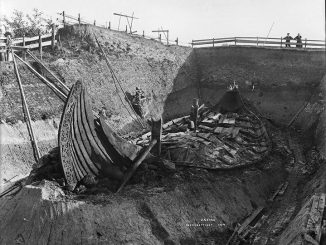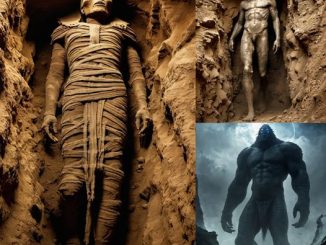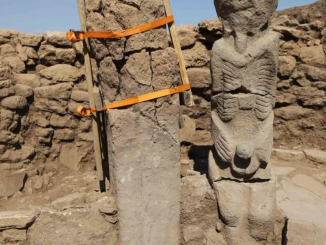The Louvre Museum, a treasure trove of historical artifacts and artistic masterpieces, houses an exquisite example of Hadrianic Roman sculpture that captures the essence of Roman artistic and cultural ideals during the reign of Emperor Hadrian. This particular piece, a detailed and emotive sculpture, exemplifies the technical mastery and complex symbolic representation characteristic of the period.

Hadrian, who ruled from 117 to 138 AD, was known for his profound appreciation of Greek culture and art, which significantly influenced Roman aesthetics during his reign. The sculpture in question reflects this influence through its dramatic expression and intricate detailing, qualities that are hallmarks of the Hadrianic era’s art. The sculpture features a deeply contemplative figure, possibly a philosopher or a deity, enveloped in a richly textured cloak that suggests a fusion of motion and emotion.

The craftsmanship is remarkable for its realistic portrayal of facial features and the dynamic flow of the drapery. The figure’s beard is carved with meticulous attention to individual strands, and the facial expression portrays a deep introspection that invites viewers to ponder the subject’s thoughts. The use of marble, a favored medium for Roman sculptors due to its smooth finish and durability, enhances the sculpture’s lifelike appearance and permanence.

The positioning and posture of the figure are evocative, suggesting a moment of pause or revelation. This characteristic aligns with the Hadrianic period’s artistic focus on portraying intellectual and emotional depth, rather than merely depicting physical beauty or heroic deeds. The sculpture is not only a representation of human or divine form but also a narrative piece that communicates the philosophical inquiries and artistic sensibilities of its time.

Located in the Louvre Museum, this Hadrianic Roman sculpture is part of a larger collection that highlights the evolution of Roman art from the Republic to the Empire. The museum’s display contextualizes the sculpture within the broader spectrum of Roman history, allowing visitors to appreciate the artistic transitions influenced by different emperors and their cultural policies.

This piece is a testament to the high level of skill possessed by Roman sculptors of the Hadrianic period, who could imbue stone with vitality and depth of character. For modern viewers, it provides a direct link to the past, offering insight into the aesthetic and philosophical concerns of the Roman Empire under Hadrian’s rule.

The presence of such masterpieces in the Louvre not only enriches the museum’s collection but also serves as an educational tool that brings ancient history to life. Through sculptures like this, the Louvre continues to fulfill its mission of preserving and disseminating knowledge about human cultural heritage across different epochs and empires, illustrating the timeless nature of artistic expression and its capacity to convey complex human experiences.


